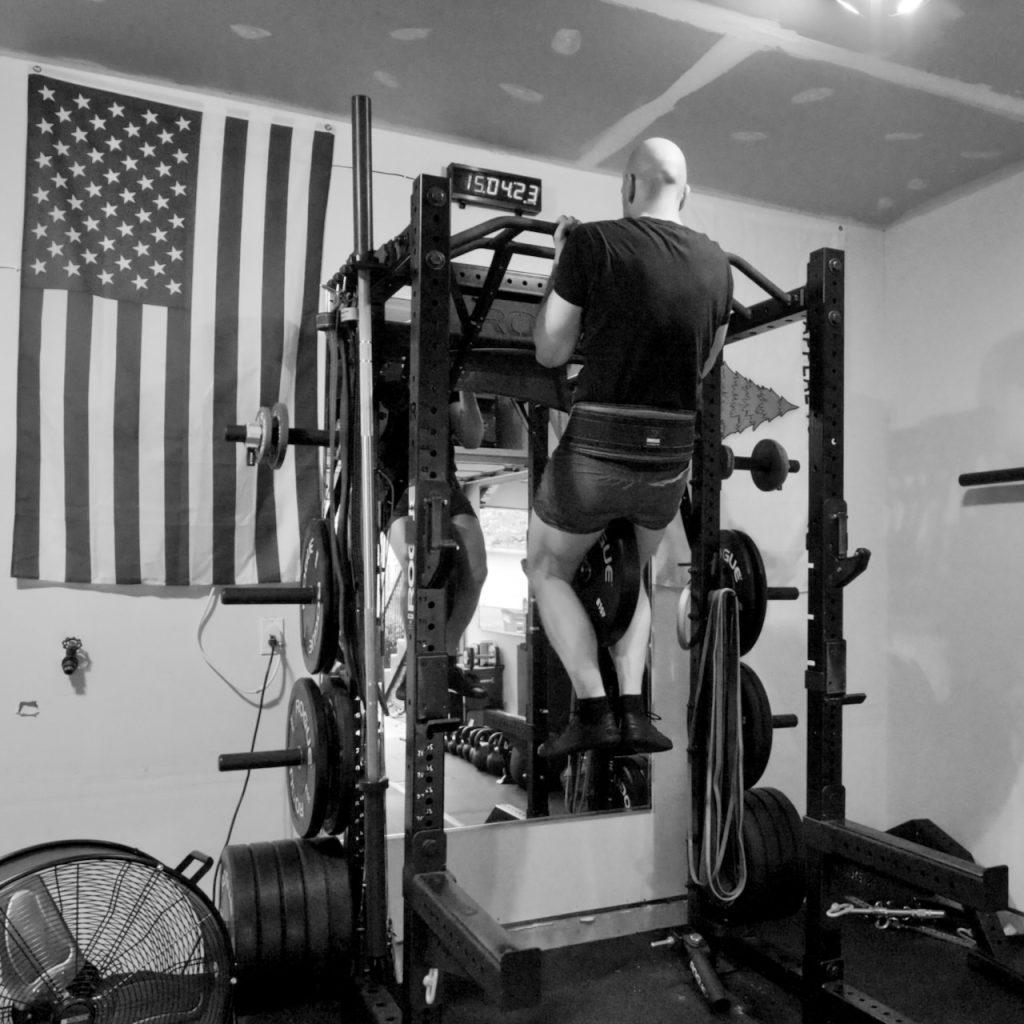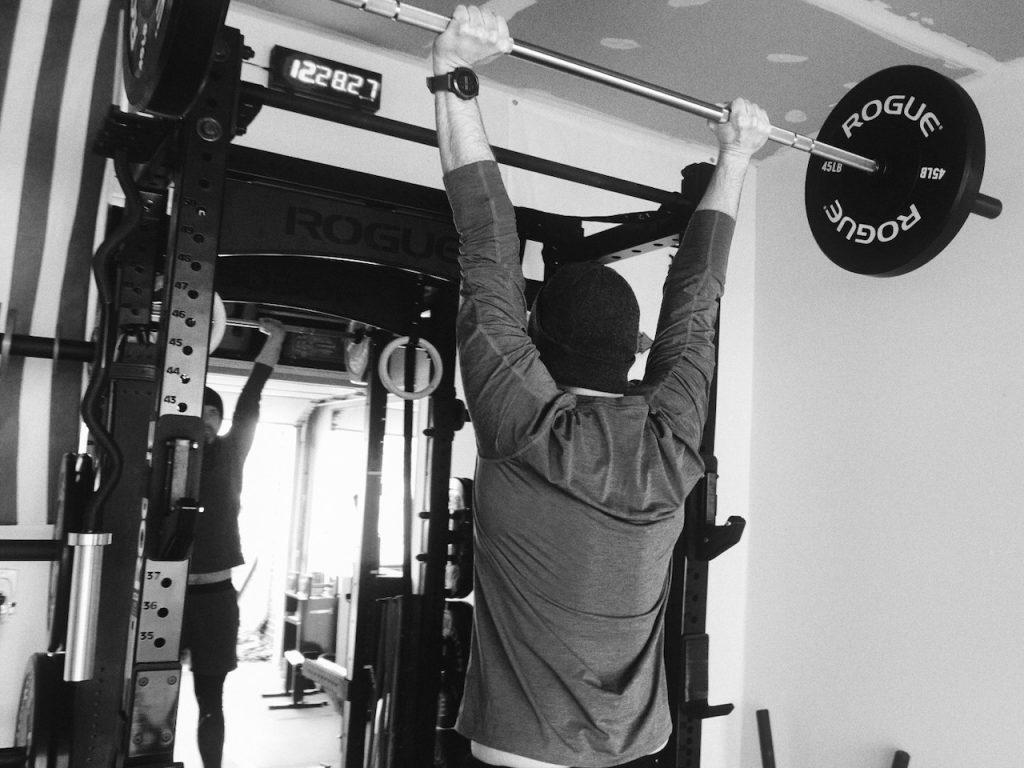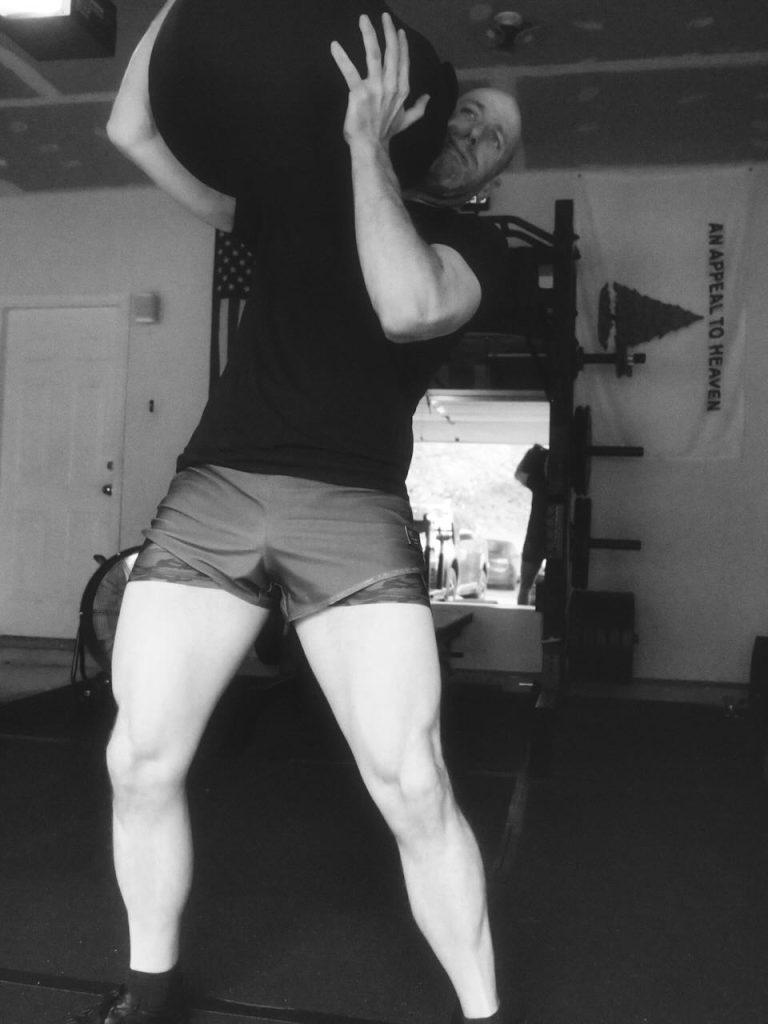This article contains affiliate links.
As you know, I’ve been working through a 25-week training program in preparation for a Spartan Race Super 10k at the end of October 2025. The program officially started at the beginning of May, and I posted an update after the first six weeks. Those first six weeks went pretty smoothly, and I was handling everything reasonably well.
Unfortunately, that didn’t continue for the second block of six weeks. I’ve had to reprogram much of what I’m doing to work around some issues that developed. So let’s dig in.
Tendonitis Woes
I followed my plan from the last report, and moved up to double 24 kg (53 lb) kettlebells for the clean and press work. About three weeks into the second block, a nagging pain in my left elbow became steadily worse. I first noticed this several weeks before, even during Block I, but attributed it to general soreness. Half way into Block II, I could no longer ignore it.
During the workouts themselves it was not too bad, but it was clearly affecting other areas of my life. For example, I could barely do proper dry-fire drills with my pistols because extending my arms was just getting uncomfortable. The pain was on the outside of the left elbow, better known as “Tennis Elbow.”
The cause? Most likely the high volume of kettlebell cleans and some kind of error with my technique.
Keeping in mind my own rule of “play the long game,” I decided to back off. Not wanting to risk aggravating the issue, I pulled back from The Giant X program and evaluated what to do, instead. The goal would be to limit issues with wrist flexion and extension under load while still letting me get my strength work in.
Revising the Plan
Eliminating the Clean & Press meant I was losing a lot of my pressing and hinge work.
I went back to the drawing board and pulled a program out of the box that I bought from Andy Baker a while ago, Strength and Mass After 40 (hereafter annotated as SM40). Andy runs Baker Strength & Conditioning out in Kingwood, Texas. In the strength world, he’s a renowned coach and programming guru, and represents a lot of the brain power behind writing Practical Programming for Strength Training (along with Mark Rippetoe) and The Barbell Prescription along with Dr. Jonathon Sullivan (the latter book being something I consider mandatory reading for anyone interested in long term strength training, regardless of age).
The SM40 program is a short read and well-worth the $25 cost. The program focuses on a four-day-per-week rotation of basic heavier barbell lifts combined with lighter variations and accessory work. The intention is helping older guys still make progress while balancing recovery needs.
Without giving anything away, I rebuilt my plan to follow SM40 to a tee for the back half of the block. Going into Block III, I’ll keep SM40 as the main strength plan, but drop it back to three days per week so I have room on Saturdays for event practice.
Conditioning
One of the unfortunate side effects of quitting The Giant X was losing a sizable part of my conditioning plan. Long bouts of double clean and press get the heart rate up, similar to sprinting.
That said, I did keep up with Building the Engine. At least for most of the block. By the time I got to the last two weeks of the block (and the final 5 workouts of the program), I was so dreading sprint intervals on the Echo Bike that I pretty much quit and replaced it with a mix of Zone 2 and going outside to run 3 miles.
I should note that I went out and ran a 5k without much of an issue at all, and it was my first time actually running this year. There was a significant amount of carryover from Mike’s program to aid with running. I can also definitively say that my heart rate recovery is quite good (for me, at least). After completing any hard bout of exercise that spikes my heart rate, it comes down quickly.
For me, dragging that program out for 12 weeks instead of the 8 weeks it’s designed for was probably a bit too long. Trying to get it done in the initial 8 weeks would have been better.
Programming Change & Weight Reset
Unfortunately, I cannot directly report on strength gains. My prior programming was based on Tactical Barbell methodology, which uses set percentages of 1 RM, and all workouts stem from that 1 RM. In contrast, Andy Baker’s SM40 eschews set percentages and instead bases work off of an established 5 RM.
Effectively, take a weight you can perform a high-quality set of 5 reps with, and then add 5% to 10% to get your working weight for 3-rep days. Add another 5% to 10% to get your weight for 1 rep days. From there, every rep target (5, 3, 1) progresses independently as you hit the target.
Making this calculation meant dropping the working weights just slightly for the first 3-week cycle. I hope to not do any more program hopping for the rest of the project, so we’ll see how these new working weight numbers progress over the next 10 weeks leading up to the race.
Block III is Next
The next block is the final lead-up to the actual race. This consists of 8 weeks of full-contact programming, followed by a three-week taper down leading up to race day.
The strength portion of the plan stems from Andy’s SM40. There are four workouts, each one prioritizing a main heavy compound lift for the day.
- A: Barbell Overhead Press
- B: Barbell Squat
- C: Bench Press
- D: Deadlift
After each main lift, there are a series of accessories and variations to provide overlap with other days. For example, after doing squats, I will do good mornings to get the hinge pattern in. After deadlifts, I do Hatfield Squats to get the squat movement in. Dips (for the chest) happen after overhead press, and I do dumbbell pressing after bench press.
Since there are now only three strength days per week, this is an asymmetric split that takes 4 weeks to run a complete cycle.
- Week 1: A, B, C
- Week 2: D, A, B
- Week 3: C, D, A
- Week 4: B, C, D
Conditioning Plan
Now officially complete with Building the Engine (even if I stopped it a little short), I’ve built three workouts that rotate in a similar fashion.
- Tempo Work
- Fobbits
- Low-Intensity Steady State (LSS)
Tempo work means picking a distance and working to beat your pace. Running is preferred because the Spartan Race is a running event, but anything will work. I’m starting with 3 miles and building up to 6 miles over time. Alternatively, I could cycle on the BikeErg for distance, row for distance, or use the Echo Bike for calories. The goal is to work hard while keeping the heart rate reasonable.
Fobbits are a fun little workout I gleaned from Tactical Barbell II: Conditioning. Set a timer for 30 minutes and then begin some kind of cardio activity. Every two minutes, stop the cardio and go do something else that’s strength or power related. Continue this until the 30 minutes runs out. My plan calls for two minutes on the Echo Bike at an easy pace, interspersed with five box jumps.
For LSS, otherwise known as Zone 2, the goal is simply to do cardio for 45-60 minutes while keeping my heart rate in the correct “easy” zone.
I use Tuesdays and Thursdays for these workouts, doing them in the same kind of rotating sequence as strength days.
Event Days
The last workout is the event day. These happen every Saturday, and are meant to be “race simulators.” The goal is taking all of that conditioning work I’ve done for the last 12 weeks and convert it into actual activity. The workout is pretty simple, but hard.
- Run 800 meters
- 5 chin ups
- Sandbag over shoulder x 1 (100 lb sandbag)
- Carry 100 lb sandbag 75-150 meters (increases over time)
- Sandbag over shoulder x 1
On the first week, repeat this sequence 3 times. That builds over time until repeating it for 10 rounds on the 9th week. I’ll have everything set up in my garage, so all I really need to do is run laps around the neighborhood and stop in the garage each lap to do the movements. It takes as long as it takes, which is why it’s on Saturday.
Onward
That concludes my Block II update and retrospective. As the saying goes, no plan survives first contact with the enemy. In this case, the enemy was looming joint injury, and taking a safer path to keep training progressing. It seems like a minor temporary setback, but I think the long term results will be great nonetheless.






